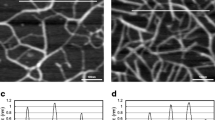Abstract
Multivariate statistical methods were applied to data sets of measured gelling properties of blue whiting mince with several hydrocolloids added (locust bean gum, guar gum, xanthan gum, carboxymethylcellulose, ι-carrageenan, κ-carrageenan or alginate) induced under different pressure-time-temperature gelling conditions. The main differences between gels were attributed to the process; all the gels were classified in three clusters on the basis of gelling treatment: (1) high-pressure at moderate heating, (2) high-pressure at cold temperature and (3) heating at atmospheric pressure. Cluster 1 was characterized by very elastic, light gels with high water holding capacity. In cluster 2, gels presented high puncture test properties (breaking deformation, breaking force, work of penetration) and high cohesiveness and water holding capacity. Cluster 3 gels presented low penetration test properties and cohesiveness; high adhesiveness and hardness; high lightness and yellowness. Each cluster was subdivided to describe the gel properties between the hydrocolloid groups, attributing the differences mainly to yellowness (b*), breaking deformation, breaking force and work of penetration.
Similar content being viewed by others
Author information
Authors and Affiliations
Additional information
Revised version: 14 September 2001
Electronic Publication
Rights and permissions
About this article
Cite this article
Pérez-Mateos, M., Montero, P. Effects of hydrocolloids and high-pressure-heating processing on minced fish gels. Eur Food Res Technol 214, 119–124 (2002). https://doi.org/10.1007/s00217-001-0426-5
Received:
Published:
Issue Date:
DOI: https://doi.org/10.1007/s00217-001-0426-5




